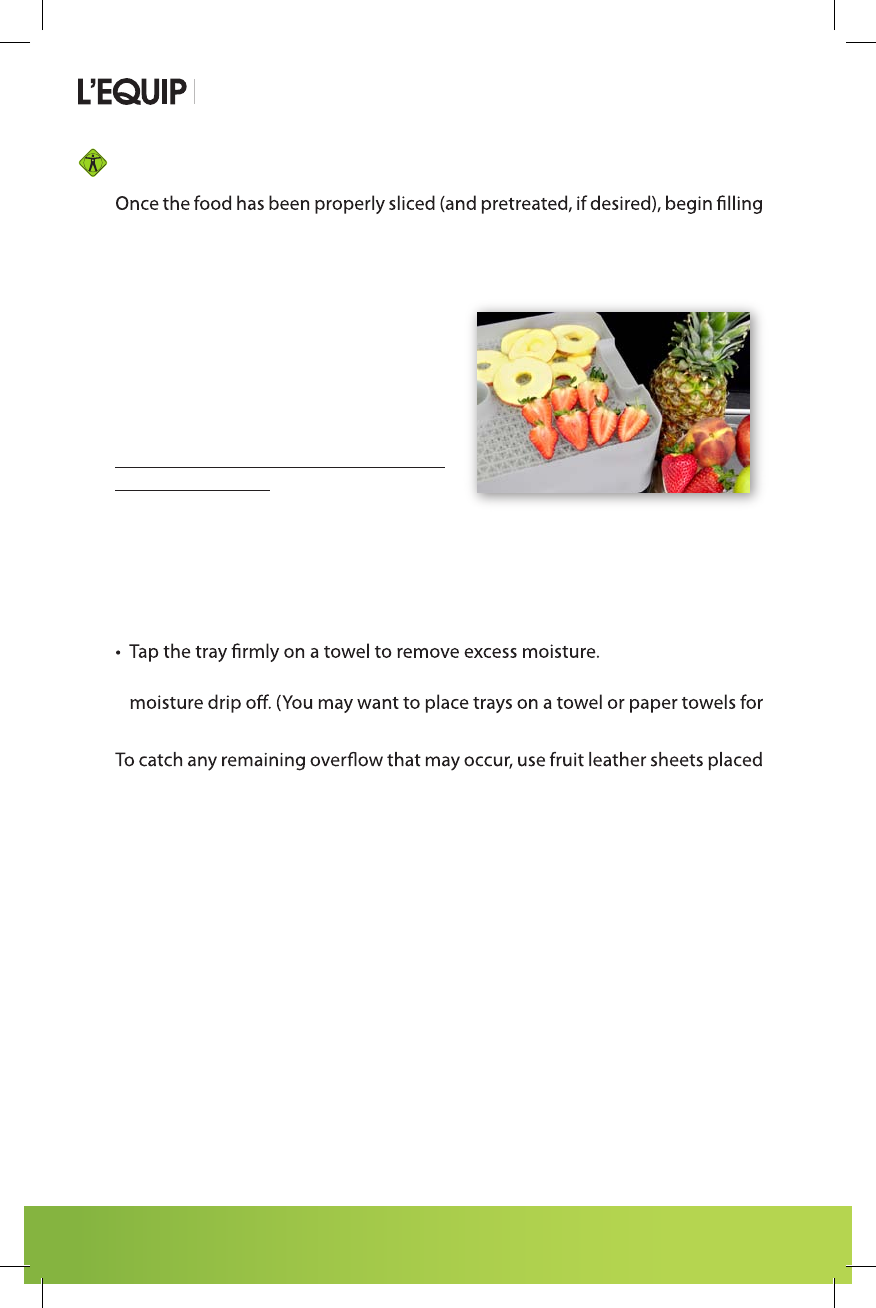
DEHYDRATOR
12
How Long To Dehydrate Continued:
Begin to check sliced fruits, vegetables and meats periodically after several
hours of drying time. Check more often near the end of the drying process.
Herbs, leathers or chopped and shredded foods may dry sooner.
If foods have been over dried and seem brittle or slightly browned, they are
still usable for soups or most baked goods. They may take slightly longer to
reconstitute and require additional water, but avor is generally not impaired.
Tray Rotation:
The L’EQUIP Dehydrator is designed to operate with up to 20 trays. When using
more than 4 trays, periodic rotation will give optimum results. Inspect drying
trays periodically. Rotate trays if food being dried requires it. Place top tray on
the bottom, followed by the next uppermost tray, etc.
FILLING THE DRYING TRAYS
the dehydrating trays. Arrange slices on the tray in a single layer, leaving a little
space between slices. Center hole in each tray must always be left uncovered
to allow air to circulate. If only one side of the food is cut, place the cut side up.
To Prevent Dripping:
If moisture drips down to the base and
gets into the motor, it will damage the
electronics.
Place food on dehydrator tray.
Do not immediately place on the
dehydrator base.
To prevent dripping from foods that
have been washed, sugared, marinated or are high moisture foods, such as
very ripe tomatoes or citrus fruit, do the following before placing trays on the
dehydrator base:
• Blot as much excess moisture from food as possible.
• Let food trays sit away from dehydrator for 10 minutes, to let excess
easy cleanup)
on the bottom two trays. Alternate placing the sheets on one half of each tray.
This will allow the warm air to circulate. Then place these two bottom trays
(without food), directly on the dehydrator base. Do not use wax paper, as the
wax will melt at dehydration temperatures. Remember to always leave the
center hole uncovered or unobstructed.
Fruit leather sheets and empty trays may be removed when food stops dripping.
How Long To Dehydrate:
It is impossible to give exact drying times because the moisture content of
each food varies with the weather, soil conditions, where it was grown, how
thick it was sliced as well as the particular variety of food. Denser food takes
longer
to dry. With a little experience, you’ll be able to tell which foods take the
longest. For example tomatoes, which are normally quite juicy, will take longer
than cabbage, which is dry. Citrus fruits will take longer than apples. Record
your successes for future reference.


















